Vorsprung Telum
Adjustments: Rebound, high- and low-speed compression, hydraulic bottom-out, climb switch
Sizes offered:
- Metric:
- 210 x 47.5 / 50 / 52.5 / 55 mm
- 230 x 57.5 / 60 / 62.5 / 65 mm
- 250 x 67.5 / 70 / 72.5 / 75 mm
- Metric Trunnion:
- 185 x 47.5 / 50 / 52.5 / 55 mm
- 205 x 57.5 / 60 / 62.5 / 65 mm
- 225 x 67.5 / 70 / 72.5 / 75 mm
MSRP: $1,200 USD / $1,600 CAD (includes a Sprindex adjustable-rate coil spring)
Blister’s Measured Weight:
- Telum damper: 559 g (230 x 65 mm w/ 8 x 20 mm hardware)
- 390–430 lb Sprindex spring: 409 g
Reviewer: 6′, 160 lb / 183 cm, 73.6 kg
Bolted To: Geometron G1
Test Duration: 5 months
Test Locations: Washington, California
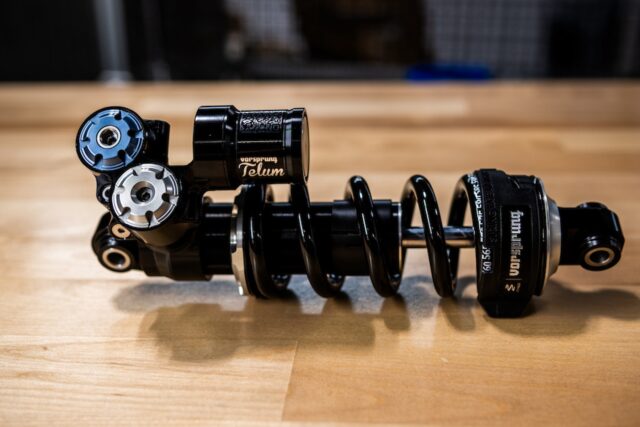
Intro
Vorsprung hasn’t been shy about the fact that they’ve been working on a coil shock — their first full, standalone suspension product, after making a lot of very good upgrade parts for other manufacturers’ forks and shocks over the years. But they’ve kept a lot of the technical details more quiet, until now. And there’s a lot of interesting stuff going on here, so let’s get right to it.
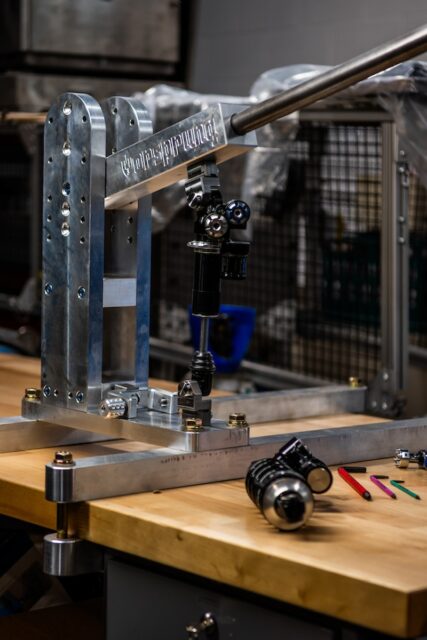
Design
Vorsprung founder Steve Mathews laid out a lot of the high-level design of the Telum when we spoke on Bikes & Big Ideas early this year, and the stuff he divulged back then hasn’t changed. The Telum is coil sprung with a twin tube damper featuring adjustable hydraulic bottom out, high- and low-speed compression, a single rebound adjuster, and a climb switch. It’s available in metric eyelet and trunnion-mount sizes from 47.5 to 75 mm stroke (i.e., 210, 230, and 250 mm eyelet and 185, 205, and 225 mm trunnion lengths). The eyelet version uses spherical bearing hardware where applicable, but standard cylindrical ones are also available if needed (e.g., for bikes with a shock yoke) where spherical bearings aren’t viable.
[If you really want to nerd out on all that stuff, Vorsprung has published an excellent guide to shock mounting design for frame manufacturers that lays out the important criteria in general, and some Telum-specific compatibility details. The TLDR on the latter is that the total length of the shock plus any yoke used can’t exceed 315 mm for eyelet shocks or 290 mm for trunnion ones; yokes should clamp directly onto the shock eyelet, not any reducer hardware; and the yoke must use some sort of rolling element bearing (i.e., not a plain bearing / bushing) at its pivot.]
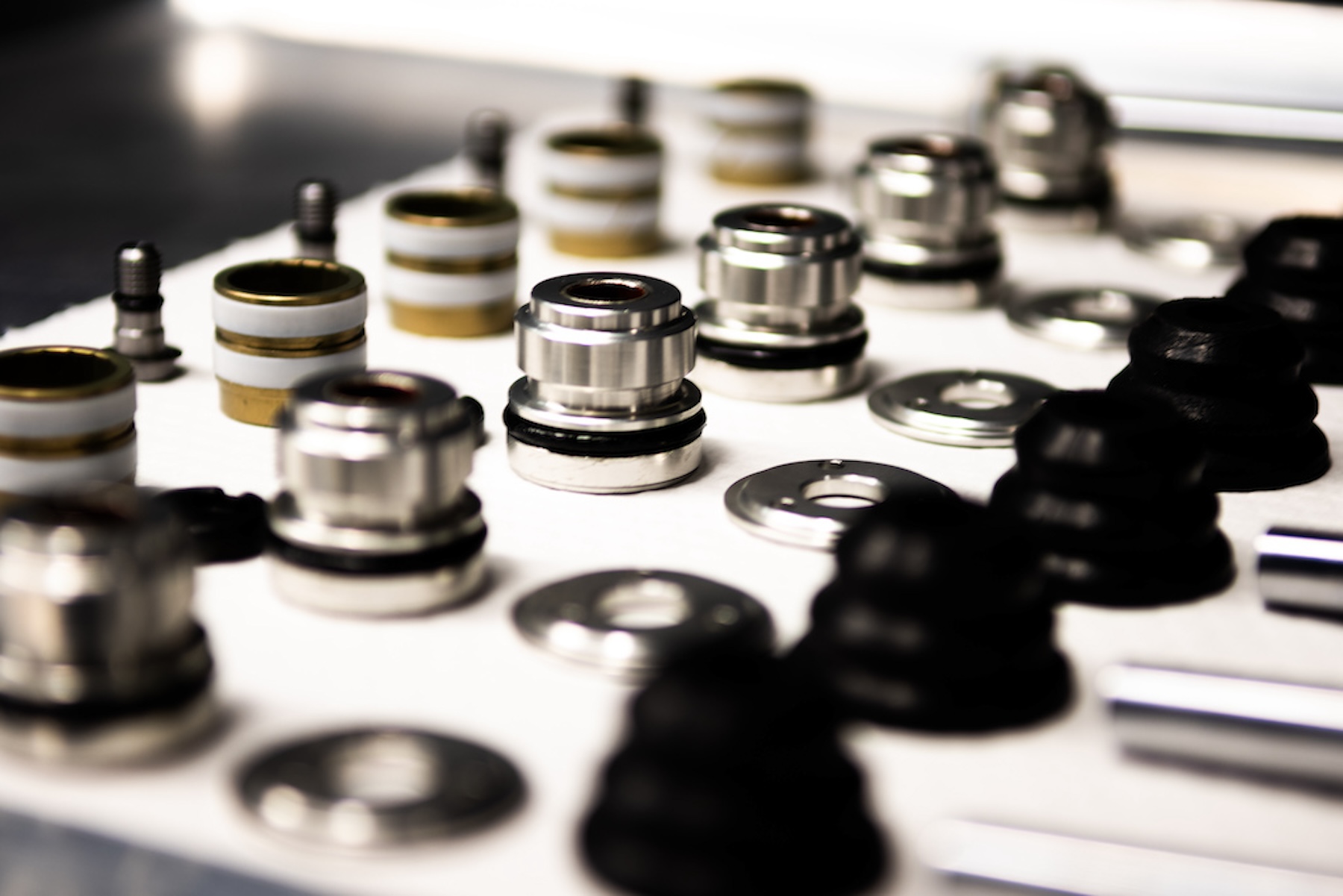
There are some interesting things going on with the Telum’s damper architecture, mainly that it uses a solid main piston with no oil flow through it whatsoever. All the damping (in both compression and rebound) is generated in the bridge between the main body and the reservoir which in turn helps facilitate what projection calls “Rapid Revalve.”
The idea is that it’s possible to completely change the valving of the Telum in under five minutes, without any oil loss or need to re-bleed the shock. Vorsprung kept the details of how the system works quiet at the initial launch but has now shared a lot more about the system, and opened up its use to the general public.
Vorsprung has a four-part video series that covers the design of the Telum in general and the function of the Rapid Rebound system in particular in great detail, which you should check out if you want to learn more. Part 1 covers the concept and overall layout of the Telum; Part 2 goes through some of the design specifics in more granular detail; Part 3 explains how shim stacks and conventional damper adjusters work; and Part 4 describes the inner workings of the Rapid Revalve system and how you use it.
The short version of the Rapid Rebound system description is as follows:
The Telum’s regular adjusters work fairly conventionally. The low-speed adjusters (both compression and rebound) are needle-type designs that vary the size of an orifice through which the majority of oil flow happens at lower shaft speeds before the shim stack opens much. The high-speed compression adjuster preloads the compression shim stack, requiring more force to open the shim stack as you close the adjuster.
That’s similar to how most high-end dampers do things, but there are limitations to what you can achieve with that style of adjustment, which is where the Rapid Revalve system comes in. Rather than requiring you to open up the shock and change the shim configuration to make more fundamental changes to the shock’s valving, the Rapid Revalve system varies the amount of leverage the oil pressure in the damper has on the shim stack, thereby effectively changing the stiffness of the shim stack. This is accomplished by varying the effective clamping diameter of the shim stack, by rotating an oblong clamping face to change where the shim stack bends. That allows the Rapid Revalve system to change the gradient of the damping curve in a way that conventional external adjusters can’t.
It’s also impressively easy to use. Essentially all you need to do is (1) open all the adjusters fully; (2) loosen the end camp for the side of the damper (rebound or compression) you want to adjust using projection’s pin spanner tool (available on their site for $40 CAD); (3) turn the Rapid Revalve adjuster to the desired setting; and (4) clamp the damper end cap back down to the correct torque spec. There’s no need to open the shock up, no fluid loss, and no need to swap shims around or rebleed the shock afterward.
As per usual for protrusion, their case for why Rapid Revalve is valuable is both convincing and amusingly stated. As they put it: “Should you ever want a re-tune for any reason (different bike, different preferences, overdosed on ice cream, overdosed on Ozempic, moved to BC, moved away from BC etc), that’s also extremely cost-effective to do.”
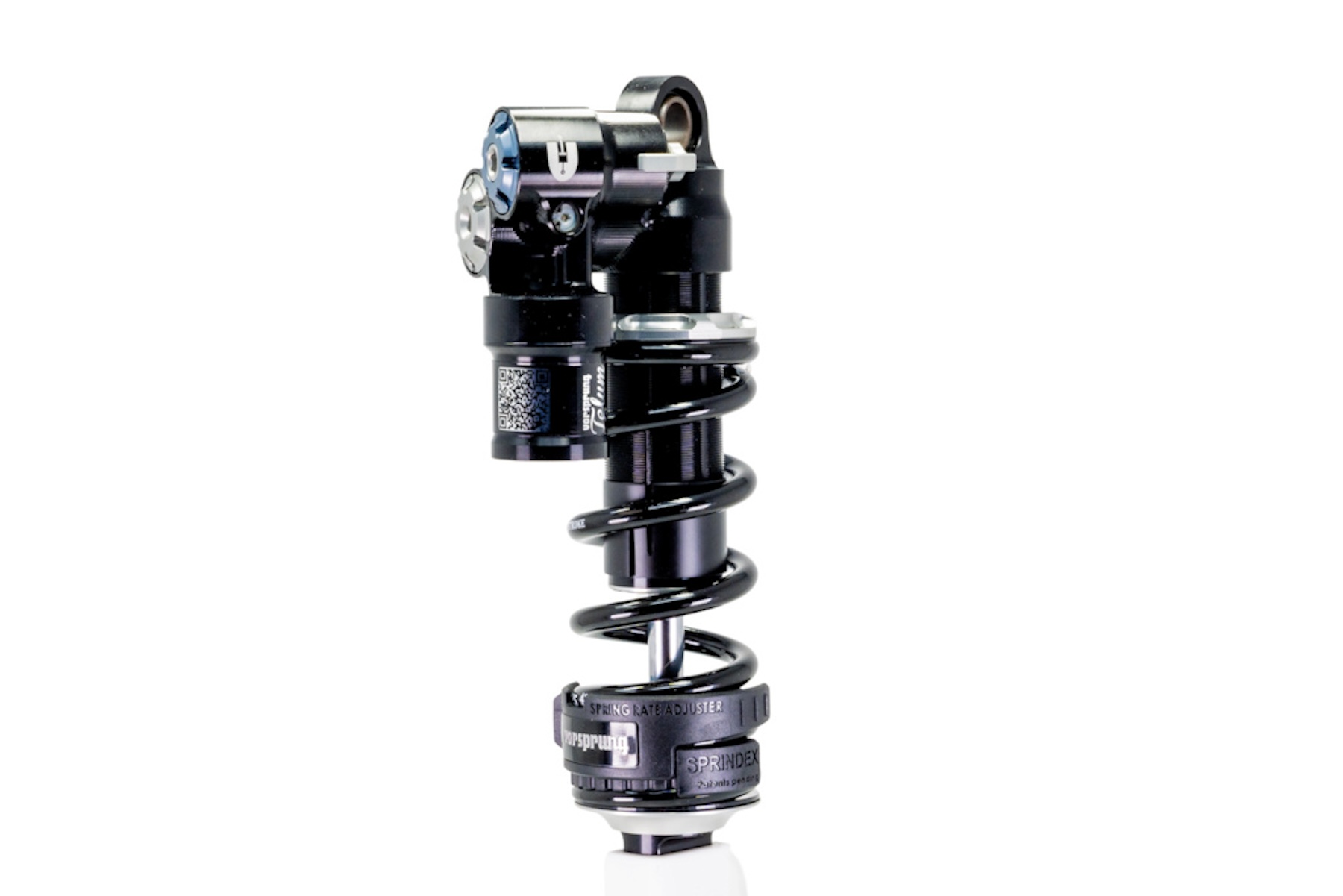
Also unsurprisingly, given Vorsprung’s history of custom suspension tuning (check out Ep.60 of Bikes & Big Ideas for a lot more on that), the Telum comes custom valved for a given rider / bike combination — there’s no “stock” tune to be found. The ordering process involves filling out a questionnaire that covers the bike that the Telum is destined for and some questions about the rider, their typical terrain, and a few other details. The “Vorsprung Tuning Hub” then generates a damper tune and recommended spring rate based on all of that information. If the initial valving isn’t to the rider’s liking, Vorsprung will work with them to get it sorted out. And in a very neat additional touch, the Tuning Hub tracks all prior valving configurations based on the shock’s serial number, so you can easily keep track of what’s been tried already if you’re working through various options. The Telum also comes with a Sprindex adjustable-rate coil spring to make dialing in the spring rate a bit easier. Vorsprung doesn’t offer spring exchanges, but will sell an alternate one at a discount if the initial option winds up being off base.
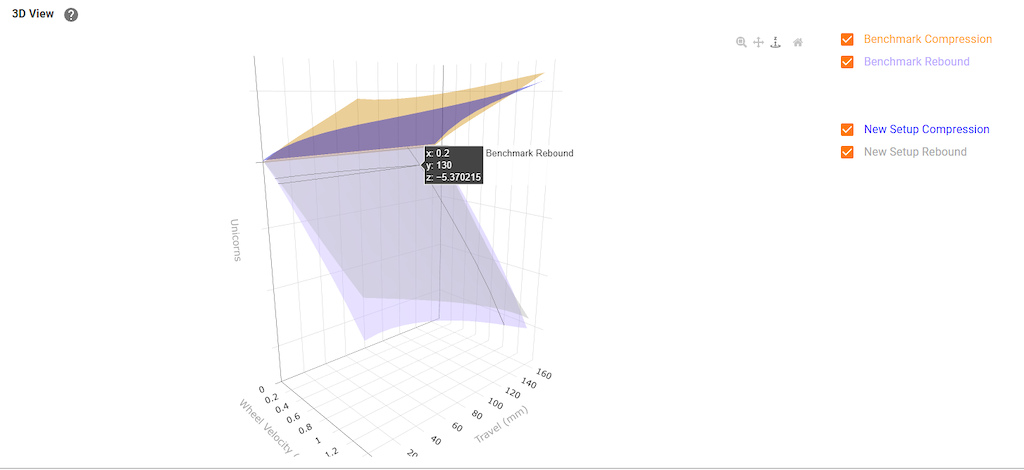
Vorsprung also has a clever solution for reducing the stroke on the Telum. On a shock without a hydraulic bottom-out circuit, it’s easy: just put spacers under the bottom-out bumper, or the face that it runs into on the shock body. If you do that on an HBO-equipped shock, like the Telum, though, you take away a portion of the stroke where the HBO circuit is in play, reducing its efficacy. Most other shocks with an HBO circuit thus require you to swap some of the HBO parts to accomplish a stroke change.
The Telum goes about it differently. Instead of spacing in the bottom-out bumper, the Telum reduces the stroke from the other end by spacing in the topout bumper. That, of course, has the side effect of shortening the shock’s eye-to-eye length; Vorsprung solves that by offering different length eyelets that simply screw on to the end of the damper shaft to compensate. You still need to open the shock up to add the stroke adjusting spacers, but it’s still a less involved process than it is on most HBO-equipped shocks.
And, finally, the Telum is built by Vorsprung in their new home of Kamloops, BC.
Some Questions / Things We’re Curious About
(1) First and foremost, how does the Telum perform, and how does it compare to many of the other high-end coil shocks on the market?
(2) How does the Rapid Revalve system work? Vorsprung isn’t going into too much detail publicly, but we’re quite curious.
FULL REVIEW
I’ve been impressed with a number of Vorsprung’s aftermarket suspension upgrades over the years — the Secus, in particular, is a very clever bit of engineering, and works extremely well — so my hopes for their first standalone suspension product, the Telum, were high. It hasn’t disappointed.
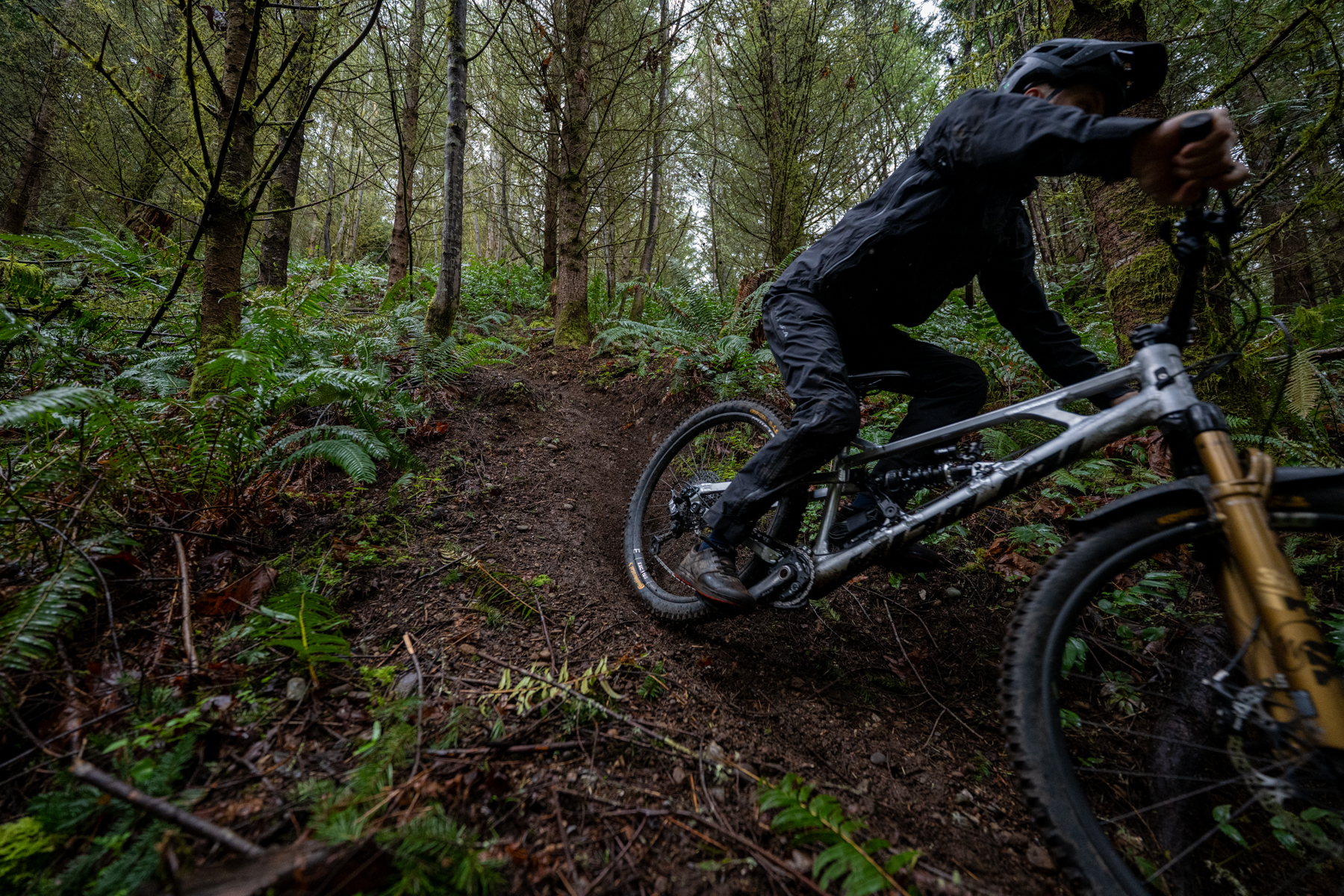
Ordering & Configuration
I’m going to cover the ordering process more than I typically would, since it’s such a key part of the initial configuration of the Telum.
In short, the purchasing process starts with the Vorsprung Tuning Hub, beginning with a short questionnaire that covers basic rider information (age, weight, aggression level, strength), some details on the rider’s typical terrain (steepness, speed, jump/drop size), the bike in question, and the rider’s chosen “preferred feel.” Most questions are just multiple choice, with a dropdown menu of three or four options. The Tuning Hub then uses that information to recommend a spring rate, damper tune, and baseline settings. You can also input the spring rate manually if you know what you want.
I went through the process before I’d ridden the updated Geometron G1 that I used as the test platform, but I had owned the prior-generation G1 (which features nearly identical suspension kinematics) for several years, so I had to take a little bit of a guess on a couple of the details — chiefly my preference for a “compliant,” “balanced,” or “stiff” setup.
Long story short, I had a hunch that I’d want to run a bit firmer spring rate on the new G1 than I had on the old one, and chose “stiff.” That turned out to be an overcorrection, and the initial spring rate Vorsprung recommended turned out to be slightly high. With the “preferred feel” field swapped over to “balanced,” the recommendation that the Tuning Hub spat out was very close.
The main thing I have to say about the process is to be honest in your self-assessment — you’re not going to impress anybody by overstating your ability / the size of the jumps you’re hitting / etc., and will just end up with a less dialed initial setup for it.

The Tuning Hub saves that initial tune configuration (tied to the shock’s serial number) so that you can reference it later, and tracks any subsequent changes that you make. If you want to go as granular as tracking the exact adjuster settings you tweak as you go, it can do that; if inputting those every time you tweak something seems like too much work, you don’t really need to.
Big picture, I think Vorsprung has done a truly impressive job of simultaneously making it easy to order a shock and get accurate custom valving without needing to know a ton about suspension design or setup, while also letting folks who want to eat the whole elephant dive into tweaking their damper tune do so easily, and with a lot of easily accessible information about what they’re doing.
Performance
Getting a shock that’s appropriately tuned for you and your bike is a great start, but how does the Telum actually perform? In short, extremely well. The biggest thing that stands out about the Telum is how consistent and predictable its damping feels. More than anything, that manifests as an absence of the Telum doing anything unwanted to draw attention to itself. The Telum just does its job quietly (both literally and figuratively), remaining controlled and composed, and rarely missing a beat in such a way that it reminds you it’s back there.
That settled, planted feel is most notable on fast, rough sections of trail, where the Telum does a truly commendable job of keeping the chassis stable, letting me just get on with my riding. It’s not so muted as to feel dead, and I can always still tell what the rear wheel is doing. I’m trying not to use the word “composed” a thousand times in this section, but it really is the most apt adjective I can come up with. The Telum’s ability to keep the rider and chassis stable and the rear tire gripping is impressive, and it never seems to do anything unexpected that would distract from the task at hand.
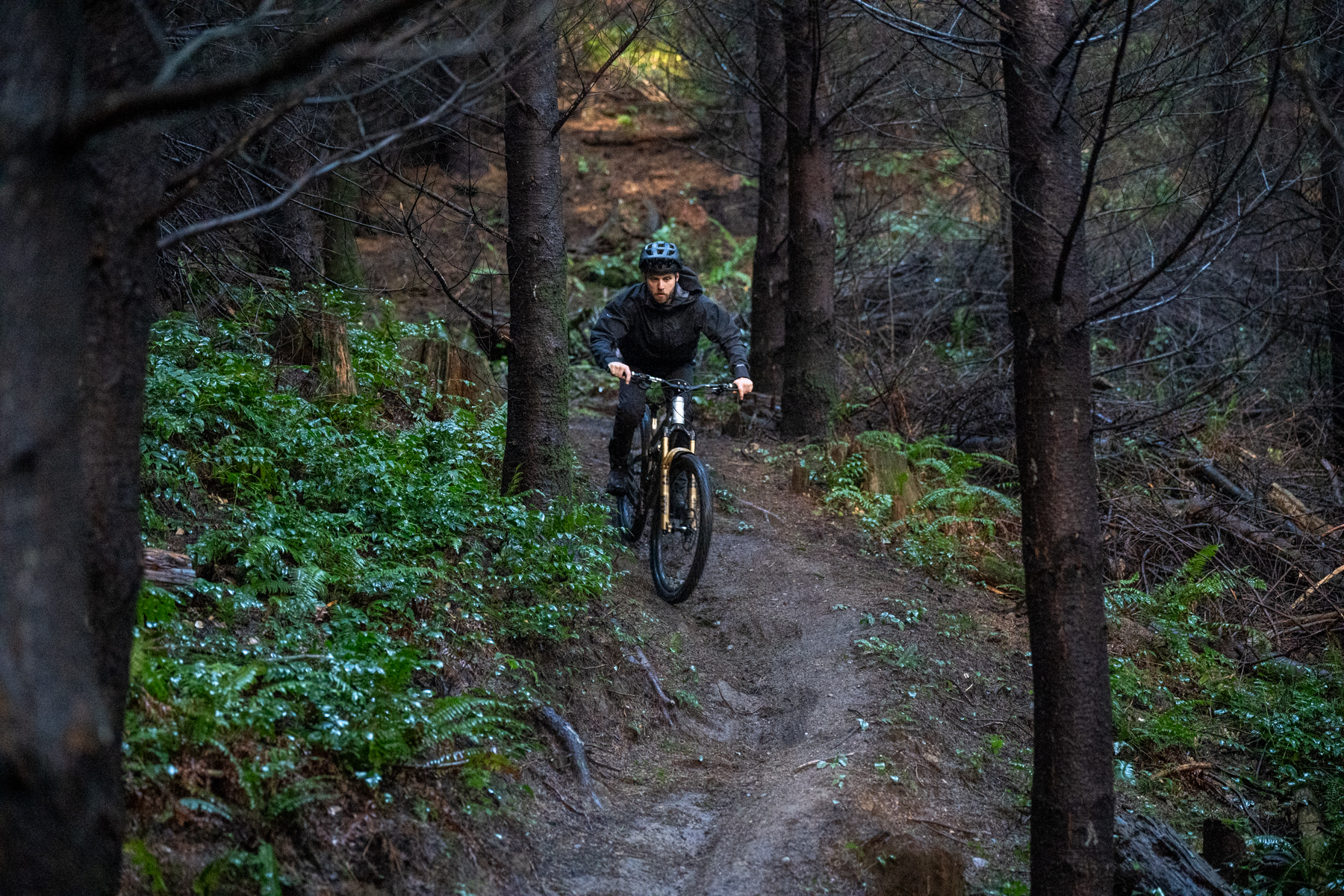
In getting to that level of performance, I did make a slight change to the Telum’s rebound tune from the one that the Tuning Hub recommended. I found myself wanting the shock to recover slightly more quickly from bigger, deeper compressions without speeding up the rebound too much over smaller chatter (less high-speed rebound damping, essentially). Lightening the rebound tune slightly and then adding a couple on the rebound adjuster to compensate did the trick.
In some ways, the Rapid Revalve system makes it hard to neatly characterize the performance of the Telum, by making it so easy to completely change the valving — it can be a lot of different things, depending on what you want it to do. There are limits, of course. From talking to Vorsprung founder Steve Matthews and sifting through the dyno plots for various setups in the Tuning Hub, it’s clear that the Telum is designed to offer relatively linear damping curves, rather than letting you get really weird with substantially digressive or progressive ones.
Steve’s take — and I tend to agree — is that, at least for MTB applications, fairly linear damping curves are generally desirable anyway, and produce the most consistent, predictable performance across the range of situations that crop up in the real world. There’s a huge amount of tunability in the Rapid Revalve system to pick the overall amount of damping you want (both on compression and rebound), along with enough adjustability on the standard compression adjusters to tinker with the shape of the damping curve around the high-speed/low-speed crossover, but there are enough guardrails in place to stop you from doing anything hugely weird with the damper tune.
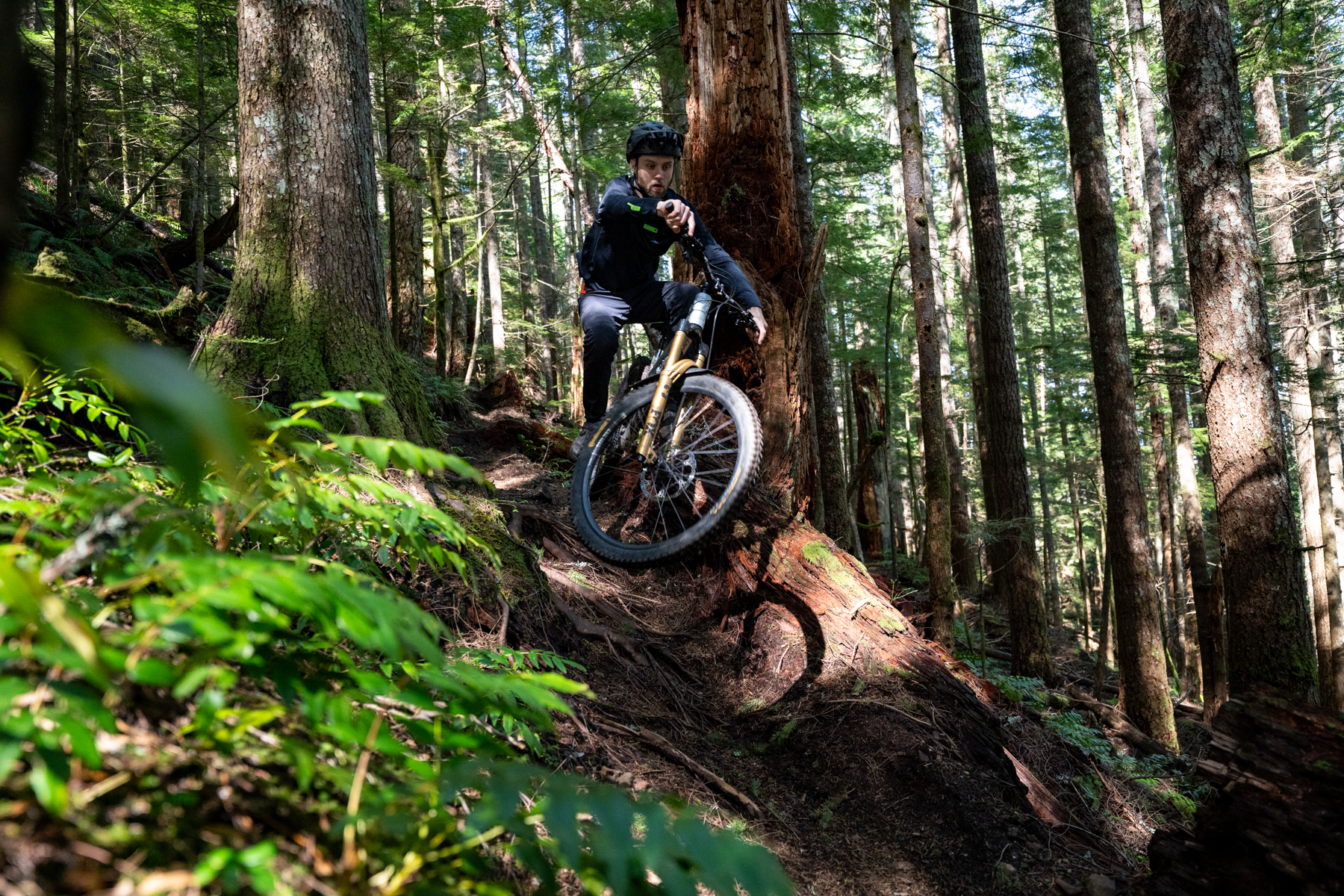
Of course, the performance of other shocks also depends heavily on their valving, and the Telum is hardly unique in being adaptable to a wide range of applications and performance characteristics through valving adjustments. But it’s the simplicity of that process that sets the Telum apart. With most shocks, you need to do a full teardown to access the shim stacks, which in turn either requires sending the shock to a service center or shop with the tools and expertise to do the work, or having some specialized equipment (often including a vacuum bleeder) and the confidence to do it yourself. With the Telum, it’s truly just a matter of a few minutes, with no real mechanical aptitude needed.
[Scroll back up to the “Design” section, above, for a lot more on the Rapid Revalve system.]
I think that’s valuable in several distinct ways. First and foremost, it makes it much easier, quicker, and less expensive to revalve the Telum if the initial tune isn’t quite to your liking, or your needs change for whatever reason. If you just want to nerd out and learn what changing your shock’s damping curves does, that’s easy too — especially since the Tuning Hub gives you a dyno plot of each configuration that you select. And finally, it also makes it much easier to move a Telum to a new bike (provided that it uses the same size shock), or resell one when you’re ready to move on, since a potential buyer doesn’t need to either find the right tune for them, or budget in getting it changed.
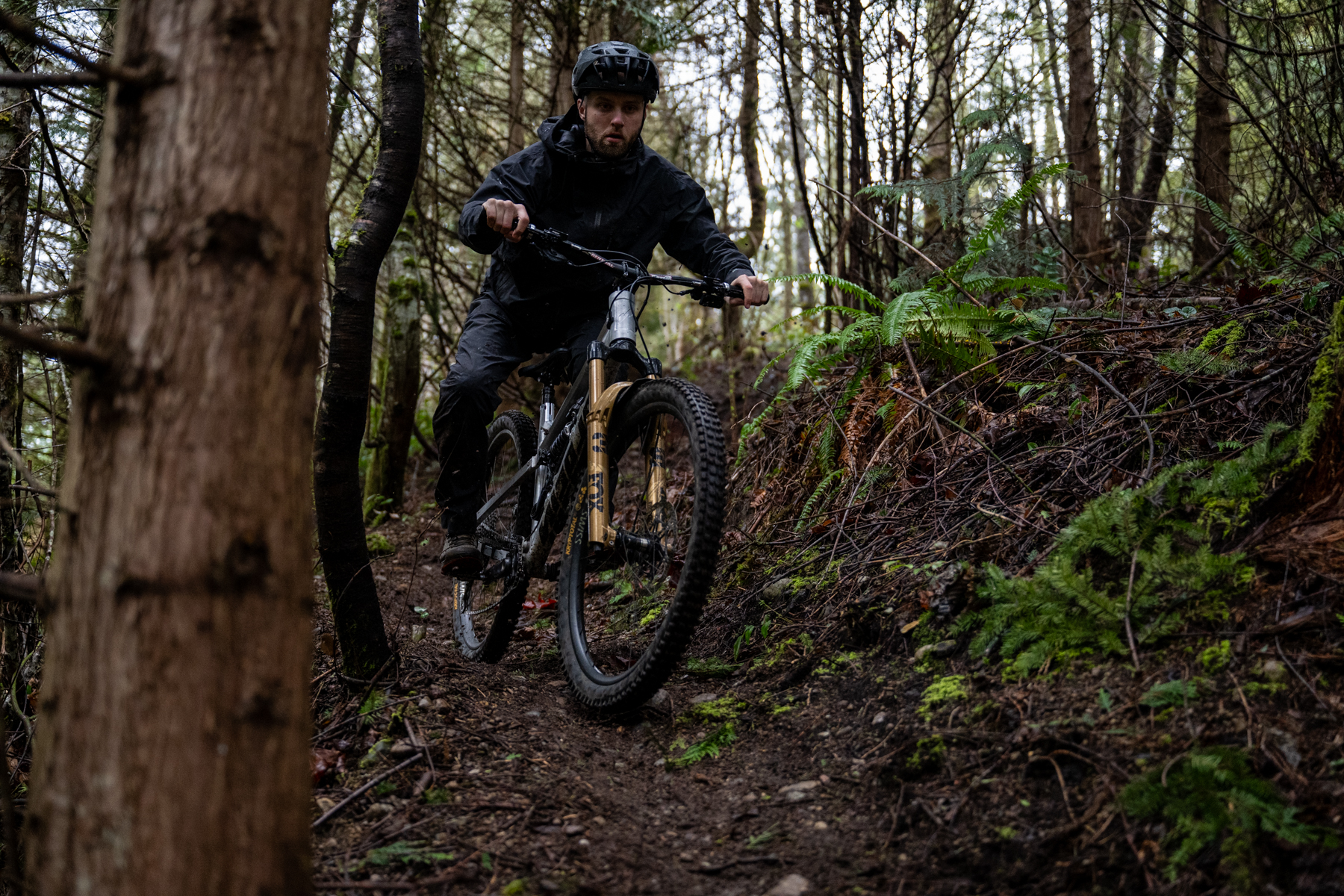
If I have any slight quibbles with the Telum’s ease of use and tuning, it’s that the detents on the low-speed adjusters (compression and rebound) are pretty faint, which means that counting them requires you to go slow and pay close attention. They’re there, and it’s far from the end of the world, but they could be better defined.
I’m able to get the Telum and the stock EXT Storia V4 from the G1 feeling fairly similar, but the Telum is just a little more composed and transmits less feedback in certain situations, mostly over fast chatter where the shock needs to switch back and forth between the compression and rebound cycles quickly and repeatedly. It’s subtle, and the Storia V4 is a clear improvement over the V3 on that front, but when riding the V4 back-to-back with the Telum over the same section of trail, there are moments where the Storia feels like it hesitates ever so slightly in going from compression to rebound on sharp but not-that-huge-magnitude impacts. Both are very, very good, and I am able to make the Storia feel a touch more lively and energetic without running the rebound faster than I want it to be overall, but there’s not a huge gap between the two there, either.
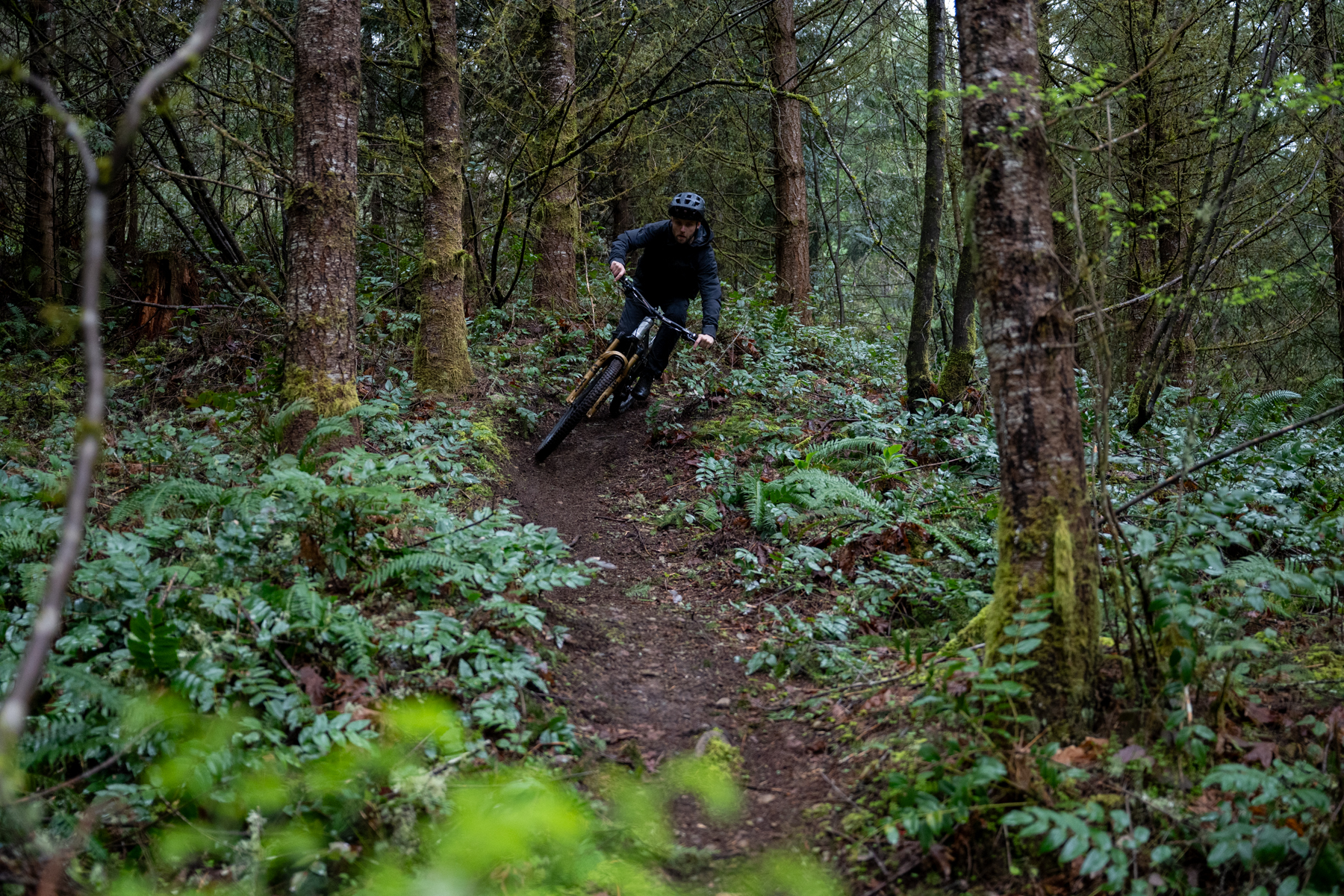
I’d hoped to be able to try the Telum on a second bike and report back on how the process of re-tuning it went, but, unfortunately, the Telum doesn’t clear the swingarm on my Contra MC (the only other bike in the current fleet that takes a 230 x 65 mm shock), and a different 230 x 65 mm bike I had lined up fell through for unrelated reasons. I’d still like to make that happen and will report back if and when I can.
Who’s It For?
The obvious answer here is anyone who is drawn to the Rapid Revalve system, because there isn’t anything else quite like it. And it’s an appealing feature for a variety of reasons — easy re-tuning if your preferences change, you want to move the shock to a new frame, or just want to experiment, and potentially easier resale down the line.
But that framing doesn’t tell the whole story. The Telum is simply a very high-performing shock with consistent, effective damping and, by all indications so far, solid reliability. It’s got a notably effective climb switch, it’s quiet, and through the Tuning Hub, Vorsprung has done an especially good job of making it easy for folks to communicate their needs and get their shock custom-tuned appropriately without needing to know much about the finer technical aspects of suspension performance.

Bottom Line
There are lighter coil-sprung shocks, and there are less-expensive options that perform quite well, but from a pure suspension performance standpoint, the Telum might well be the new high-water mark among the options that I’ve tried. Combine that with the ingenious Rapid Revalve system and the detailed, easy-to-understand tuning information offered in the Tuning Hub, and Vorsprung has made not only an impressive product, but also an unusually well-thought-out full ownership experience, from ordering to eventual resale or reconfiguration for a new bike.
Share this post:

I’m looking forward to hearing about this one.
I have five days of bike park on the Telum mounted to a DH bike, riding both tech and jump trails. My impression is that this is a premium shock. Damping profile is higher than my previous 2024 DHX2. I would describe a “quieter” feel with a better platform to pump the bike, I don’t notice any downsides. Running recommended compression settings and two clicks faster than recommended rebound, also slightly increased compression in my fork to match the shock.
Telum seems sick. But how are you getting along with the new G1? Specifically compared to the previous gen?
Full review coming very soon!
Your own money you buying Storia or Telum?